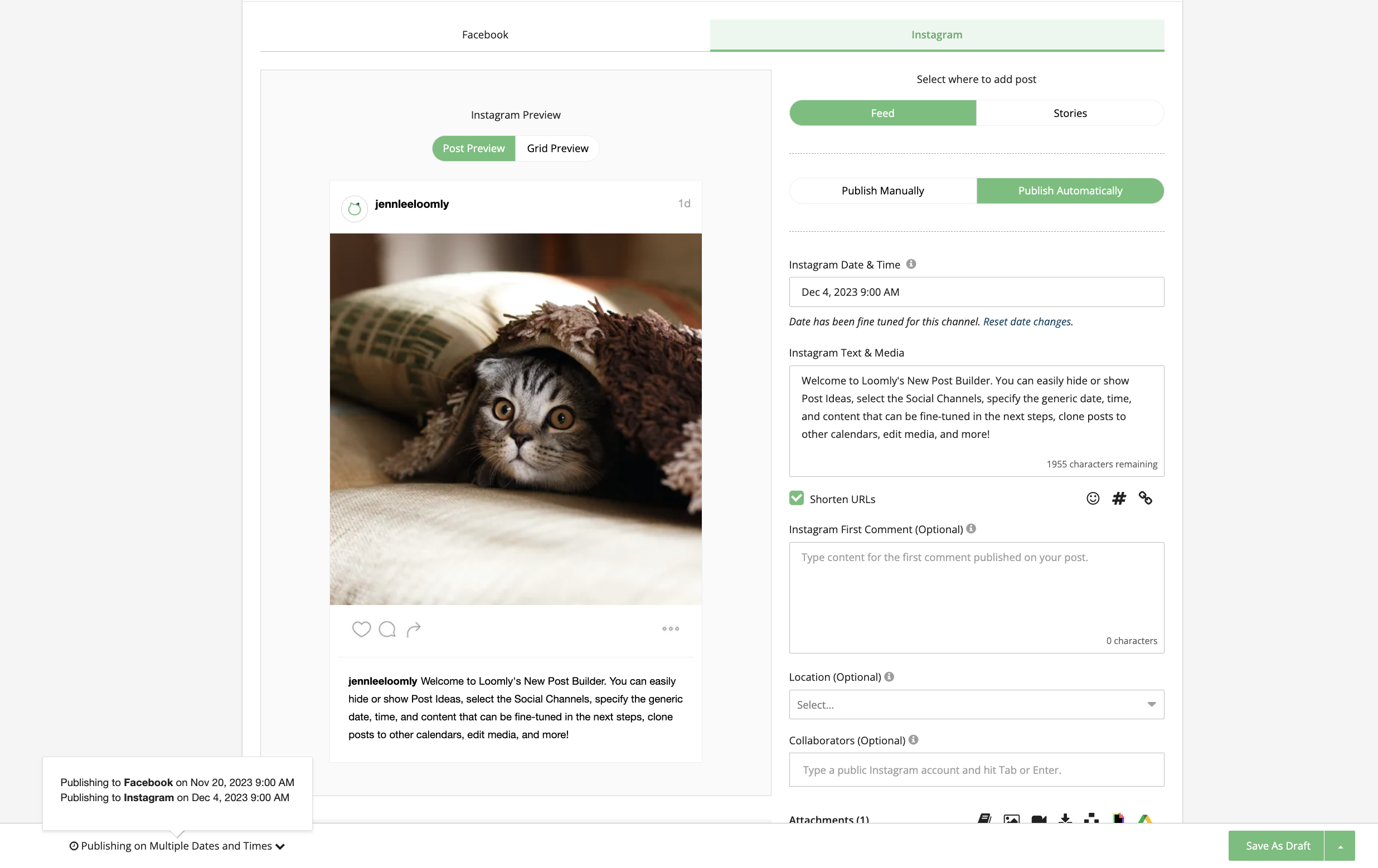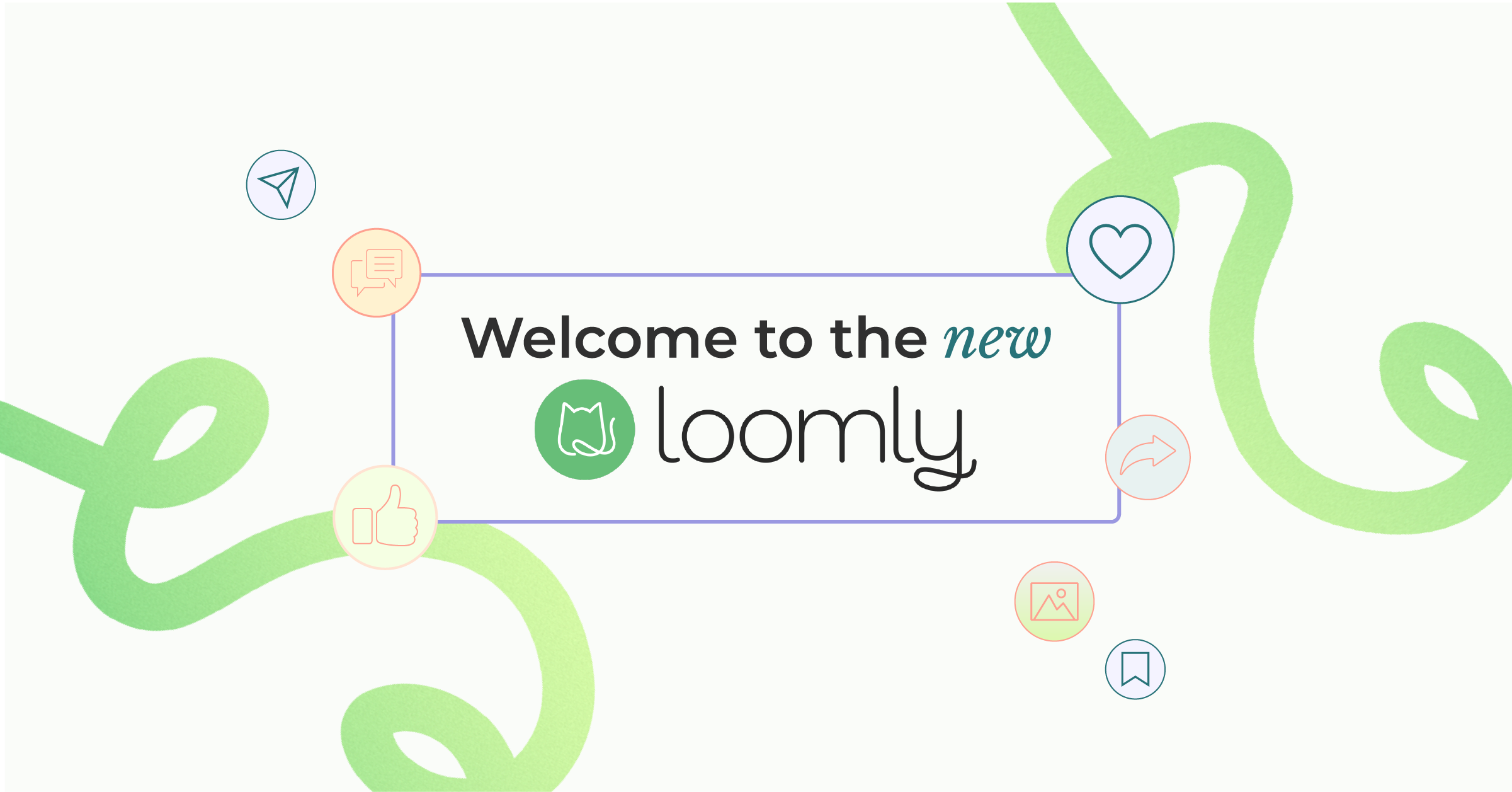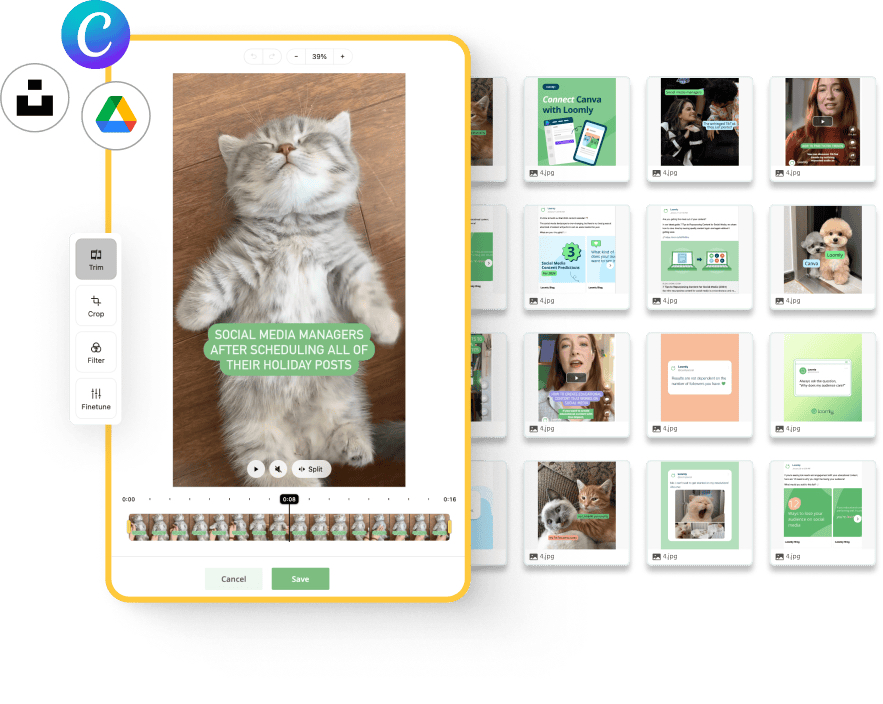TechRadar Verdict
Loomly offers a really nice, simple service with clear tiers that are good value compared to some of its rivals. While some features, like custom branding, are reserved only for the top tiers, everything else is there. One of the big pluses is that all major social platforms are supported on all tiers.
Pros
- +
Lots of features
- +
Many features available on all plans
- +
Lovely UI
- +
Lots of online support documents
Cons
- -
Custom branding reserved only for top tier
- -
Some rivals cater more to power users
Why you can trust TechRadar
Loomly is one of the newer and snappier entries into TechRadar Pro's list of the best social media management tools, and with good reason. Built for the social media era, Loomly tries to make life simple for its users – which could soon include you.
We've already thoroughly tested the likes of Hootsuite, HubSpot, and Circleboom, and while these might be more familiar names in the social media space, Loomly is definitely worth checking out.
Loomly themselves tout huge time savings of 30 hours per week for average users, who can make use of the built-in 300 or more content ideas, which can be especially helpful for smaller organizations with fewer people to bounce ideas off.
There's a reason that the likes of Dior, Honda, BMW, The Salvation Army, Thomas Cook, and many more use Loomly's services to manage their brand posts across every major social media channel, and some smaller ones too.
Given the world we live in has become dominated by social media platforms, making sure your business can stay ahead of the pack is vitally important. Just having a company blog no longer cuts it in 2024, sadly, as users discover services via social media and everyone is competing for attention.
In this review, we're going to cover a lot of ground and make sure you can make an informed decision about whether Loomly is your pick for best social media manager in 2024. Let's dive in.
We've also featured the best small business software of 2024
Sign up to the TechRadar Pro newsletter to get all the top news, opinion, features and guidance your business needs to succeed!

Plans and pricing
First, the good stuff: pricing. If you're a small business, or even a one-person operation, then cost is going to be very, very important and might weigh more on the decision than the respective features.
Loomly is priced very competitively and splits its service into four very easy to understand tiers: Basic, Standard, Advanced, and Premium. We'll go through each.
- Basic: as the name suggests, this is the lowest level tier that Loomly offers, with support for 10 accounts, two users, and access to interactions, analytics, a hashtag manager, post previews, and more, for $32 per month.
- Standard: billed as the most popular option, a Standard subscription gives you everything in Basic plus 20 accounts, six users, advanced analytics, content exports, and Slack and Teams integration, for $60 per month.
- Advanced: for larger clients, this tier supports up to 35 accounts and 14 users, plus the ability to set custom roles, create custom workflows, and enjoy scheduled reports, all for $131 per month.
- Premium: finally, for the biggest companies, Loomly offers a tier that can handle everything, including up to 50 accounts, 30 users, and the ability to add custom branding, plus everything else in the other three plans, for $277 per month.
All of these subscription tiers include a discount when paying annually, which might be something your organisation wants to do anyway – a nice little addition.
Loomly also offers an Enterprise tier that comes upon request, and includes tailored support via an account manager and the ability to scale up beyond even the heights of Premium, while getting a nice little discount.

Features
With pricing out of the way, let's get into the actual features that Loomly has on offer. As standard, Loomly supports all of the major social networks – Instagram, Facebook, YouTube, TikTok, Google, Snap, and so on – and that applies to all of the tiers, not just the more expensive ones, which is a nice touch.
All users can also access the ability to schedule unlimited posts, publish directly, manage hashtags, use link shorteners, and store unlimited assets on the platform. Compared to some of its rivals, that's a decent list.
Loomly also lets every user access an approval workflow (which is very handy given the downsides to posting things before they're ready) and the ability to set user roles. All but Basic get Slack and Teams integrations, too.
In terms of actual content creation, Loomly offers users Basic through Premium access to post previews, Google Drive, Canva, a post inspiration tool, the ability to reply to interactions, and an analytics dashboard.
Finally, Loomly's iOS and Android apps are available to all and really help with jotting down ideas on the go or making tweaks while you're out and about. Some rivals reserve the apps for higher tiers, so this is also a nice thought.
If you thought this section went on for a little it's because, well, Loomly is very generous with the "basic" features on its service, making this ideal for any organization that doesn't want to spend too much while being able to do a lot.
We've also featured best Business plan software of 2024
Digging a little bit deeper, let's take a look at some of the more advanced features that Loomly offers. While the company is generous, there are some features your business might want to take advantage of that require a higher plan.
Starting off with an obvious one, Loomly lets Standard tiers and upwards access its advanced analytics, which does go into a lot more detail, as well as the ability to export results. Advanced and Premium users can also schedule reports.
Exporting content, such as analytics, lists, calendars, and posts, is also not something the Basic tier can manage, meaning you'll need to go for Standard or above if those workflows sound important.
Custom branding, something big organizations will surely want, is limited to only the most expensive Premium plan. Users can utilize a branded subdomain, custom favicon, and a custom logo as part of this feature set.
To close out this section, Loomly also offers access to over five million royalty-free images and videos, plus daily post inspiration to get the ideas flowing.
We've also featured the best business laptops in 2024

Analytics and reporting
Given that keeping track is one of, if not the main reason to use social media management platforms, this section might be the most important, depending on your organization, of course.
Loomly tracks a lot. Post-performance can be measured in real time across every single major social network, labels are available to help measure campaigns, and users can schedule analytics reports at regular intervals to help keep things under control.
The main aim is to help users get a better understanding of what's working and, importantly, what's not: not every post will be a smash hit, but over time you'll be able to build up a knowledge of what works.
Instagram, Facebook, LinkedIn, and X (or Twitter) all get the detailed analytics treatment, with granular insights into how posts are performing, and the ability to create new posts to "mimic" those. Having everything in one place makes life so much easier, too.
Finally, Loomly offers loom.ly domains for its clients, helping you get additional data on who is opening your links, when, where, and why. It's a neat little addition.

User interface
For our money, Loomly has one of the best UIs out there when it comes to social media managers: everything is in the right place and easy to use, even advanced features and settings.
The company recently redesigned many of its core features to make everything that much smoother based on customer feedback and it's made a huge difference.
A great example is the rebuilt Post Builder, which, as you can imagine, is one of the main places you'll be hanging out in the app. Loomly worked on reducing the number of steps to create content, such as by introducing collapsable post ideas, the ability to close content, and new ways to label different pieces of work.
Loomly's ultimate goal is actually to automate much of your workflow – part of the reason there is a focus on mimicking older posts – and that bleeds into how you spend time actually using the app. Unlike some rivals, Loomly almost wants you to spend less time on there, or at least doing boring tasks.
As the company says of its website: organize away the chaos. By making Loomly your creative and organization hub for all things social media, life becomes a bit simpler.
We've also featured best small business website builders of 2024

Support
As you might expect, support is handled very well, from the most basic to specific customer-by-customer help. Loomly publishes a blog, YouTube tutorials, and much more to answer many of the most basic questions.
On top of these, Loomly also publishes webinars and hosts specific courses to help users make the most of its powerful software. That's the thing, ultimately: Loomly wants users to get the absolute best bang for their buck.
We found the Help Center to be super useful for answering some early questions, and in fact it helped point us towards some things we didn't immediately know about before, which in turn helped improve our workflows.
As mentioned above, big enterprise clients are assigned a specific account manager to help them out in whatever way is necessary.
The competition
As we said above, TechRadar has spent many hours assessing the best social media management tools and found that SEMrush actually ranks the highest because it also includes an SEO management platform, plus the usual features, making it an ideal one-stop shop for everything your business needs online.
Hootsuite works the best for tracking analytics, although there is an over-arching focus on Twitter (or X), while Sprout Social ranks the highest for actually creating and posting content to the platforms.
Buffer offers great post tracking tools, on top of a great all-round platform, and Hubspot is amazing for automating workflows. Meanwhile, Circleboom has an OpenAI integration that can suggest posts, which is very high tech.
Basically, Loomly has a lot of competition! But don't let that dissuade you: if anything, the abundance of quality social media managers means that your organization is the winner, being able to choose exactly the software that fits the specific need of the business.
We've also featured best content marketing tool of 2024

Final verdict
The bit you've all been waiting for. Loomly offers a great all-round package of social media manager tools in one place, designed with the current landscape in mind and offering generous benefits across all of its tiers.
While some of its rivals might be more powerful in absolute terms (more features, and so on), what Loomly offers is a really friendly UI that takes only a moment to understand, underpinned by a powerful suite of tools that aids with every step of the process, from post creating to scheduling and managing your colleagues.
Campaign tracking is up there with the best, too, with the focus being on Loomly's calendar feature, which helps you and your coworkers be on the same page.
Working in social media can sometimes feel repetitive, and so automation is key to fighting that and at least remove some of the most tedious parts of setting up posts.
As if all of that wasn't enough, there's even a 15-day free trial on most plans.
So, to summarise, we recommend Loomly to a forward-looking business that wants the absolute best of social media management with all of the modern twists.
Max Slater-Robins has been writing about technology for nearly a decade at various outlets, covering the rise of the technology giants, trends in enterprise and SaaS companies, and much more besides. Originally from Suffolk, he currently lives in London and likes a good night out and walks in the countryside.
